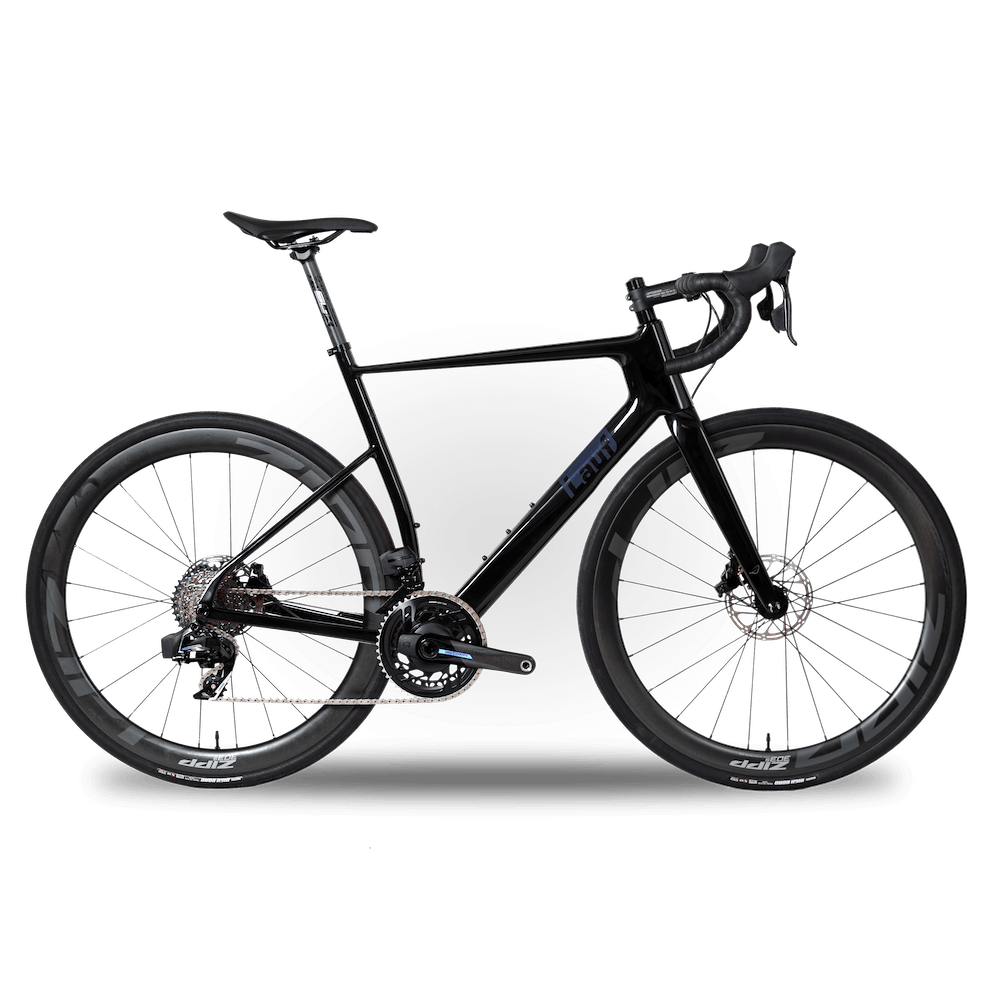The second big revelation that led to the creation of Úthald was when we realized how much comfort/compliance/suspension we were able to integrate into our latest (and greatest) gravel bike frame, Seigla. Without resorting to pivots or moving parts, that would bring complexity, maintenance and excess weight.
We immediately realized that our findings from the Seigla gravel bike eventually had to be put to work on a road bike as well. On a road bike the benefits shine even brighter, as road bikes cannot rely to the same degree on big tires for compliance.
Sure, compliance has been done on road bikes, but not like we do on Úthald. To be completely honest, a lot of bike frames that claim to be “compliant” really aren’t. They just might be “X% more compliant” than the outgoing iteration of that same bike, which perhaps wasn’t that compliant at all. While on Úthald we achieve compliance of the same magnitude as others needed pivots to achieve.
The sag from a 75kg/165lbs person sitting on the saddle of a medium Úthald is ~4.5mm, measured in a direction straight towards the rear hub. This means that when you hit that nasty pothole you could easily see travel around 15mm! Which again, is pretty much the same benefit you’d get from a heavier pivot-based gravel bike system (from a certain competitor).
Skeptics will say: “This won’t matter anyway, as all the compliance comes from the tires, and not the frame”. We don’t blame them, as usually this holds true. However, if we compare the Úthald frame compliance directly to tires... Úthald’s 15mm of compliance are actually in the ball-park of what a 20-23mm wide road bike tire can provide (when pushed close to a “snake-bite”). So, effectively we’re giving you comparable compliance to a 20-23mm tire, in addition to the compliance you get from the tire you are actually riding. That’s not nothing!
Here’s the best part though: We do all this on a fast-fit road bike. Because, why wouldn’t we? We know that a smoother ride translates to a faster ride*. So, why should only slower riders get the speed benefits of compliance/suspension?
*even if it might feel slower/calmer.
ICE’d
In the Lauf dictionary ICE stands for: Integrated Compliance Engineering.
There is an old saying in Icelandic “don’t cross a river for water” (“ekki sækja vatnið yfir lækinn”). When there is an opportunity to do something simple, don’t make it complicated!
ICE’d in the front
Many choose carbon handlebars over aluminum ones to get that extra compliance (flex). With the Road Smoothie handlebar we took things further. Our novel use of impact resistant high-end glass fibers in the central portion of the Smoothie Road translates into greatly improved ride quality. Without links, pivots, extra structures or proprietary standards.
ICE’d in the back
Our pivot-free rear suspension works through the combined effect of these 5 properties:
- The slim rear-portion of the top tube transforms the top tube / seat tube junction to a virtual pivot. The use of a standard seat clamp is critical for this function, as it avoids the added bulk of a wedge seat clamp that would “lock” the virtual pivot.
- The vertically slim seatstays allow the required twist up/down.
- The dropped seatstays channel the ground force so it bends the seat tube (since 1. and 2. above permit), resulting in a back/down movement of the saddle, along with a little dose of rear axle travel to go with it.
- The offset and tilted seat tube doesn’t just provide tire clearance, it translates into a (more desirable) more downward suspension path for the saddle. Note that the rearwards portion of seatpost flex doesn’t add comfort, it is the downwards component that counts.
- A good amount of exposed seatpost, giving the required lever arm towards the virtual pivot (ST/TT junction).
Here is a video showing the ICE’d in the back function (on the Seigla gravel bike).

 Basalt Black - Glossy
Basalt Black - Glossy Borealis - Satin
Borealis - Satin Thingvellir Sky - Glossy
Thingvellir Sky - Glossy







